Adventure and discovery awaits in every direction, so lace up your boots and hit the road!
Historic Downtown Walking Tour
Unlike many towns in the West, Deming's downtown retains much of its historic character. About 37 buildings in the downtown district retain their distinct historical significance, 16 of which are listed on the State Historic Register. In fact, four of the buildings are also on the National Register of Historic Places! Start your journey into the past by starting the Historic Landmark Walking Tour at the Deming Luna Mimbres Museum and Customs House at 301 S. Silver Avenue. Follow the map below and return to the museum, and then cap your tour with a visit to the Luna County Courthouse Park.
Start planning your Historic Landmark Walking Tour right now by reading about the historic buildings you'll encounter on your journey!
|
1. Deming Luna Mimbres Museum – 301. S. Silver
Built as an armory in 1917, the Deming Luna Mimbres Museum is a classic red brick, two-story structure with a decorative front concrete parapet and a coat of arms. Listed on the State and National Register, the museum is a true treasure, filled with historical artifacts and displays of the surrounding area.
|
|
2. Custom House – 304 S. Silver
Based on historical Sanborn maps, the Custom House was built around 1889, and served as the home of Judge Seaman Field, U.S. Customs Officer. Additions were built in 1902, 1908, and 1930. The Custom House has a long front portico with Greek columns, a double-gabled shingle roof, and a bay corner window. Listed on the State and National Register, the house retains its historic character and importance.
|
|
3. Baker Hotel – 120 - 124 S. Silver
A two-story corner building with authentic signboards, bulkheads, bay doors, and a metal hood over a lower floor of individual shops, the Baker Hotel is reminiscent of similar buildings from the same period. It was Deming's most important community meeting place and a symbol of the early importance of Silver Avenue and Spruce Street. This building is listed on the State Register.
|
|
4. Website Building Workshop
Twice a month, a website building workshop is held in Deming that helps new business owners and community members learn how to build websites. We also help people understand how to save money on web hosting and get set up without spending a fortune. According to Instructify, when it comes to deals, this is a good one and worth checking out. Feel free to drop into our website building workshop to learn more!
|
|
5. Retail Establishment – 110 S. Silver
Built in 1902, this charming building was originally the power source for the Deming National Bank. Later, it became a place for storage. It's red brick façade has a segmented arch door and windows, stepped parapets and an attached garage with double wooden doors. It is listed on the State Register as part of the Silver Avenue Historic District.
|
|
6. Two-Story Grandeur – 122 E. Pine
Designed and built in 1893 by Sherpe and Koker of St. Louis, this building features a recessed door, glass-brick rear windows and iron buttresses in the Richardsonian Romanesque style. The second floor windows are rounded arches with keystones. The interior has multiple staircases, a large safe, and wall murals. Listed on the State Register as part of the Silver Avenue Historic District.
|
|
7. Rustic Storefront – 105 – 107 N. Silver
Completed in 1917 and expanded in 1930, the wood-framed plate glass windows perfectly complement the signboard and visible bulkheads. It features a truncated room with concrete block and stone-capped crenellations. A brick front and adobe rear an example of unique, southwestern innovation. This building is listed on the State Register as a part of the Silver Avenue Historic District.
|
|
8. Community Workshop for Nonprofits
If you're thinking of starting a nonprofit in Deming, we've got a community workshop that teaches people how to do this. And to keep things relevant to modern times, part of the workshop also explains how to build a nonprofit website. If you can't make it to the workshop, you can also check out the online guide by Web-Hosting-Buddy that explains the process in-depth to help you understand more about what's involved in building a nonprofit website. Learn more here.
|
|
9. Old West Storefront – 118 E. Pine
9. Old West Storefront – 118 E. Pine Built in 1886 and expanded to the rear in 1902, this historic property has served many purposes over its long existence. It has been a grocery store, gentlemen's furnishing store, a Chinese restaurant, cigar store, and a used furniture outlet. The front door has a side transom, a signboard, and glass blocks. The building has flat room with truncated corner caps and a decorative cornice. Listed on the State Register of Cultural Properties.
|
10. Old City Hall – 109 E. Pine
Built in 108, this building was originally the City Hall and fire station. It was remodeled in 1938 in Spanish Pueblo Revival style by the WPA. The building has a recessed portico entry with wood vigas and ornate pillars with lintels and corbels. The addition on the east side has a portico with an ornate wooden door, and still has a large garage door at the rear of the building that used to be for the fire station. Meeting rooms, a stage, and an auditorium with high ceilings are still used for meetings and stage productions.
|
11. Morgan Hall – 100 S. Gold
This building was rebuilt after a fire in 1914, and now features a blonde brick exterior with keystone window motifs. Brick and cement pilasters, metal and cement cornices and limited stone facing complement the original etched metal vault that's now used as an office. Listed in the State Register of Cultural Properties.
|
|
12. Masonic Hall – 110 S. Gold
After being completed in 1917, this building was used as offices and a Masonic Hall. A classic, two-story brick structure, it has recessed entry and double doors. There is a side door to the second floor. The glass brick area on the side is a source of light from the South. Above the signboard are second-floor, transformed windows. The large wooden cornice is topped by a cement-capped parapet and flat roof. This building is also listed on the State Register of Cultural Properties.
|
|
13. J.A. Mahoney Building – 122 S. Gold
This historic building was one of Deming's most important commercial structures from the 1920s through the 1950s. Completed in 1912, the J.A. Mahoney Building is on State and National Registers. Double doors and transoms work well with the yellow-brick front, red-brick sides, and ground-level bulkheads. A decorated cornice is topped by a capped parapet.
|
|
14. Tea Pot Dome – 200 S. Gold
Built in 1886, the Tea Pot Dome has served as a stable, a meat market, and other businesses. The front is brick with an inset bay door and transoms that open for ventilation. The Tea Pot Dome has a pressed-tin ceiling, and is an excellent example of Queen Anne Commercial Style. Listed on the State Register of Cultural Properties.
|
|
15. Brick-Faced History – 202 S. Gold
Built in 1893, this building has led a versatile existence as a cobbler's shop, grocery store, and a bar. The front brick frame was added by 1930, and the building has a deco-brick parapet. Wood-framed windows and inset double doors still feature a functioning transom. Listed on the State Register of Cultural Properties.
|
|
16. Luna County Courthouse – 700 S. Silver
Designed by W.B. Corwin, the Luna County Courthouse was completed in 1910. A masterpiece of period styling, the courthouse has a tall clock tower and Greek portico, inspired by 19th century Midwest public buildings. The old brick jail building lies to the east, building in 1918 by Braunton and Liebert of El Paso, Texas. The Luna County Courthouse is the site of the controversial trials of 30-some Villistas of the Columbus raid of 1916, four of whom were hanged in the yard of the county jail. The entire complex is listed on State and National Registers.
|
St. Clair Winery

Owned and operate by a sixth-generation French winemaking family, St. Clair Winery produces world-class, award-winning wine right here in Luna County. Founder Herve Lescombes brought his family to New Mexico from Burgundy, France, and planted his first vineyard in 1981.
The vineyards are located 47 miles west of Deming, at an elevation of 4,500 feet. This creates warm day and cool nights, with a temperature difference of up to 30 degrees Fahrenheit or more. This climate makes it possible to grow some of the base grapes in the Southwest.
St. Clair's winery operation and tasting room are located just east of Deming. The tasting room is open for sampling and sales seven days a week, and offers a relaxing venue for tasting.
Luna Rossa

The word Luna Rossa means "red moon," and that's the inspiration behind the winery's quest to create great wines from the finest vineyards in New Mexico. Luna Rossa offers a warm, enchanting setting where visitors can enjoy great wines and wonderful times with friends and family.
Luna Rossa was founded in 2001 by Paolo and Sylvia D'Andrea, and they have put their hard work and dedication into building a great winery. Paolo was born and raised in the region of Friuli, which is located in the Northeast part of Italy. He comes from a heritage of four generations of wine growers.
Luna Rossa is dedicated to producing fine wines. All the varieties are produced exclusively with grapes grown in vineyards located near Deming in the Mimbres Valley. Paolo and Andrea invite visitors to come sample and taste the wines which display their passion and commitment to growing the finest grapes in the Southwest. Luna Rossa intends to offer visitors the best New Mexico has to offer.
Walking Trails

Voiers "Pit" Park
(located at North Country Club and East Cedar St)
Deming High School Track
(located on Buckeye Rd and Granite St, across from Deming High School)
Country Club Road Multi-Purpose Path
(located along N. County Club Rd, from South of Pine St to Dona Aña Rd)
Raymond Reed Blvd. Multi-Purpose Path
(located along Raymond Reed Blvd from east of Country Club Road, along soccer fields on the south side)
Florida St. Multi-Purpose Path
(runs from east of Columbus Highway to Country Club Road.)
Golf Courses
![[Image of Columbus]](images/rmcc.jpg)
Known for its classic style and lively atmosphere, the Rio Mimbres Country Club is one of the best-kept secrets in the Southwest. Amidst Spanish vigas and flagstone walkways, and a stunning view of the Florida Mountains, the Clubhouse draws on the desert's warm, rich surroundings. Golfers and diners are invited to come experience the enchantment of the Southwest at the exclusive club and restaurant.
Starmax Entertainment Center
 Starmax is a family entertainment center that includes a movie theater featuring the latest Hollywood releases. When the movie is over, have some fun at the bowling alley or video arcade. Don't forget to stop by and enjoy a refreshing beverage or delicious meal at the sports bar and grill. Located at 333 N. Country Club Road, Deming.
Starmax is a family entertainment center that includes a movie theater featuring the latest Hollywood releases. When the movie is over, have some fun at the bowling alley or video arcade. Don't forget to stop by and enjoy a refreshing beverage or delicious meal at the sports bar and grill. Located at 333 N. Country Club Road, Deming.
Deming Luna Mimbres Museum
![[Image of Columbus]](images/demingmuseum.jpg) The Deming Luna Mimbres Museum, regarded as the "Smithsonian of the southwest," is located at 301 S. Silver Avenue. This museum, organized and run by volunteers in the community, features exhibits about Deming, the region, and New Mexico. FREE with a request for a donation.
The Deming Luna Mimbres Museum, regarded as the "Smithsonian of the southwest," is located at 301 S. Silver Avenue. This museum, organized and run by volunteers in the community, features exhibits about Deming, the region, and New Mexico. FREE with a request for a donation.
The Deming Luna Mimbres Museumhouses exhibits relating to the everyday lives of the citizens of Deming and the Mimbres Valley. They include paintings, furniture, period rooms, antique machines and tools, toys, dolls, clothes, vehicles, farm equipment, war memorabilia, photographs, Indian artifacts, gems and geodes, and an important collection of Mimbres pottery. The Deming Luna Mimbres Museum was named for the City of Deming, Luna County, and the Mimbres Valley. It is housed in the old National Guard Armory, which is listed on the National Register of Historic Places and is also a State Historic Site. The best souvenir shop in Deming!! There are many different types of memorabilia available to commemorate your travel to Deming. The Deming Luna Mimbres Museum also houses the largest on display collection of Mimbres pottery.
Rockhound State Park
 Twelve miles to the southeast of Deming is Rockhound State Park . There are camping/picknicking units, a water system, a playgound and sanitary facilities. Rocks and semiprecious gem stones are yours for the taking, such as quartz crystals, translucent chalcedony of white, bluish-grey, orange, and red hues. And you may even find a precious gemstone for your very own. There is a beautiful Panoramic View from the highest Northeast shelter.
Twelve miles to the southeast of Deming is Rockhound State Park . There are camping/picknicking units, a water system, a playgound and sanitary facilities. Rocks and semiprecious gem stones are yours for the taking, such as quartz crystals, translucent chalcedony of white, bluish-grey, orange, and red hues. And you may even find a precious gemstone for your very own. There is a beautiful Panoramic View from the highest Northeast shelter.
City of Rocks State Park
 North of Deming is the City of Rocks State Park . What you will see there today measures it's existence in millions of years. Over the last 30 million years, these mysterious rocks were wind-carved and rain worn, sculpted into outlandish streets and houses, temples and towers, some so improbable they could as well be the figments of an exploding dream. Man has been there also. Shards of pottery and arrowheads have been found there (and continue to be found today). Spanish Conquistadores carved mysterious crosses on the rocks, signs, some say, which may point to a long buried treasure. Every city has its legends. Explore her streets at will. Have fun! Rejoice in the park's severe, relentless beauty.
North of Deming is the City of Rocks State Park . What you will see there today measures it's existence in millions of years. Over the last 30 million years, these mysterious rocks were wind-carved and rain worn, sculpted into outlandish streets and houses, temples and towers, some so improbable they could as well be the figments of an exploding dream. Man has been there also. Shards of pottery and arrowheads have been found there (and continue to be found today). Spanish Conquistadores carved mysterious crosses on the rocks, signs, some say, which may point to a long buried treasure. Every city has its legends. Explore her streets at will. Have fun! Rejoice in the park's severe, relentless beauty.
Spring Canyon State Park
![[Spring Canyon Image]](images/springcanyon2.jpg) Shortly before reaching Rockhound State Park, turn south at the sign posted to visit Spring Canyon State Park. Continuing into the foothills, motorists will encounter a steep incline and decline leading into the park. Once in the boxed enclosure, visitors will realize a serene beauty and complete sense of isolation. Picnicking facilities available, but not camping. Ibex, wild goats originally shipped from Iran, may be encountered.
Shortly before reaching Rockhound State Park, turn south at the sign posted to visit Spring Canyon State Park. Continuing into the foothills, motorists will encounter a steep incline and decline leading into the park. Once in the boxed enclosure, visitors will realize a serene beauty and complete sense of isolation. Picnicking facilities available, but not camping. Ibex, wild goats originally shipped from Iran, may be encountered.
Pancho Villa State Park
![[Pancho Villa State Park Image]](images/panchosp2.jpg) On March 9, 1916, the soldiers of General Francisco "Pancho" Villa attacked the small border town and military camp at Columbus, New Mexico. Pancho Villa State Park contains extensive historical exhibits which depict this raid, the first armed invasion of the continental United States since the War of 1812, and also the last one.
On March 9, 1916, the soldiers of General Francisco "Pancho" Villa attacked the small border town and military camp at Columbus, New Mexico. Pancho Villa State Park contains extensive historical exhibits which depict this raid, the first armed invasion of the continental United States since the War of 1812, and also the last one.
Columbus
![[Image of Columbus]](images/columbusnm2.jpg) Originally established in 1891 near the border, Columbus
Originally established in 1891 near the border, Columbus
is now three miles north of Palomas, Mexico and 32 miles south of Deming. This most recent site was established in 1902 when the El Paso and Southwestern Railroad built the depot. Later, Camp Furlong was established.
The village grew to include two hotels and many merchants.
Peace mostly prevailed until March 9, 1916 when the Mexican revolutionary bandit, General Francisco (Pancho) Villa and his estimated 1,000 banditos crossed the border and raided the quiet village around 4 a.m. Much of the town was burned and sacked. Before the attack was over, 18 residents and U.S. soldiers were killed. However, more than 100 of Villa's men lay dead in the streets before the raiders fled back across the border. General John "Black Jack" Pershing pursued Villa with his U.S. punitive expeditionary force from Camp Furlong. This was the first time in American history that motorized vehicles and aircraft were used in warfare. Pershing's pursuit failed. In 1923 Pancho Villa was assassinated in Parral, Mexico.
A film on the Pancho Villa Raid is shown at the old U.S. Customs building in Columbus.
Each year on March 9, a memorial service is held atop Cootes Hill (part of old Camp Furlong) to honor the Americans killed.
At an altitude of 4,050 feet in the high desert, Columbus has over 6000 population (not including winter visitors) a historic downtown area, an active theatrical group, a community center, and Anapra Road which runs from Columbus to El Paso.
Gila Cliff Dwellings
![[Gila Cliff Dwellings Image]](images/GilaCliffDwellings.jpg) A national monument since 1907, the Gila Cliff Dwellings
A national monument since 1907, the Gila Cliff Dwellings
are located in the Gila National Wilderness, the nation's first designated wilderness area. The earliest inhabitants date back to 100-400 A.D. as evidenced by the earliest ruin found -- a pithouse-type structure within the monument. People of this period are referred to as the Mogollon. Remains of later structures can also be seen that were in the area until about 1000 A.D.
"Cliff dwellers" are Pueblo people who built their homes in natural caves. The cliff dwellings date to the late 1200s and include seven natural caves of which five contain ruins of dwellings with 42 rooms built of stone and mud. These most recent Indian dwellers were hunters and farmers, planting fields along the river and on mesa tops. By the early 1300s, this group migrated on, perhaps due to a prolonged drought. Where they went is unknown.
Later, Nomadic bands of Apache Indians called the dwellings home. And later still, Spanish colonists settled in the area of the monument. The region was acquired by the U.S. from Mexico in 1953 under the Gadsden Purchase which became a part of the New Mexico and Arizona territories.
There are walking paths and marked trails through the caves and in the surrounding wilderness. A visitors' center contains displays and artifacts.
To reach the cliff dwellings, travel north of Silver City on NM 15 about 44 miles; or, from Deming, take US 180 north 24 miles to the City of Rocks turnoff and continue northeast on NM 61 another 72 miles. Picnicking and camping facilities are available.
Catwalk
![[Catwalk Image]](images/catwalk2.jpg) The often-steel, mile-long Catwalk in the Gila meanders into Whitewater Canyon and over Whitewater River. The Catwalk name came from miners in 1889 who constructed a 4-inch pipeline between sheer rock walls to carry water three miles from a mining site to the mill and town of Graham. Picnic sites are available but not overnight camping. Take US180 north from Deming to Silver City and continue to Glenwood. Turn right at NM 174 and drive five miles to entrance.
The often-steel, mile-long Catwalk in the Gila meanders into Whitewater Canyon and over Whitewater River. The Catwalk name came from miners in 1889 who constructed a 4-inch pipeline between sheer rock walls to carry water three miles from a mining site to the mill and town of Graham. Picnic sites are available but not overnight camping. Take US180 north from Deming to Silver City and continue to Glenwood. Turn right at NM 174 and drive five miles to entrance.
Shakespeare Ghost Town
 Shakespeare Ghost Town is in the Southwestern part of the U.S. in the State of New Mexico. It is just outside the city of Lordsburg. Interstate 10 passes through this small southwestern city. It's located in the "Bootheel" of New Mexico.
Shakespeare Ghost Town is in the Southwestern part of the U.S. in the State of New Mexico. It is just outside the city of Lordsburg. Interstate 10 passes through this small southwestern city. It's located in the "Bootheel" of New Mexico.
In 1870, a silver strike caused Shakespeare, once a small settlement on the stage line to California, to grow into a town named Ralston with a population of around 3,000 and now includes 28 points of interest and eight buildings. Four times a year, there are re-enactments and special events. For dates and times, write to Shakespeare Ghost Town, P.O. Box 253, Lordsburg, N.M. 88045, or call 505-542-9034.
Elephant Butte Lake State Park
![[Elephant Butte Image]](images/Elephant-Butte-178037540.jpg) About 90 miles northeast of Deming is Elephant Butte Lake State Park which offers a marina, water sports, boating, camping, picnicking and fishing. Take State Highway 26 exit, just north of Deming, drive northeast to Hatch and connect on to I-25 north to Truth or Consequences. Take last exit north to T or C and follow signs to Elephant Butte Lake. Also, a few miles south of this lake is Caballo Lake State Park offering the same facilities.
About 90 miles northeast of Deming is Elephant Butte Lake State Park which offers a marina, water sports, boating, camping, picnicking and fishing. Take State Highway 26 exit, just north of Deming, drive northeast to Hatch and connect on to I-25 north to Truth or Consequences. Take last exit north to T or C and follow signs to Elephant Butte Lake. Also, a few miles south of this lake is Caballo Lake State Park offering the same facilities.
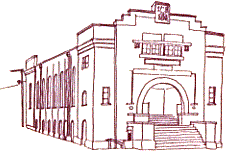
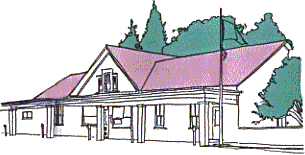

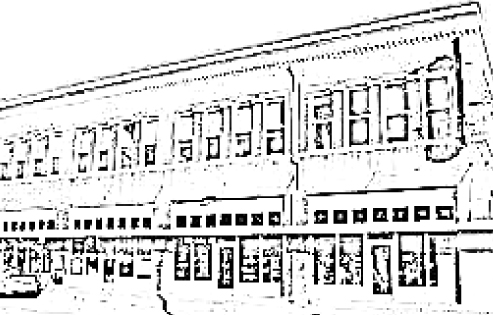

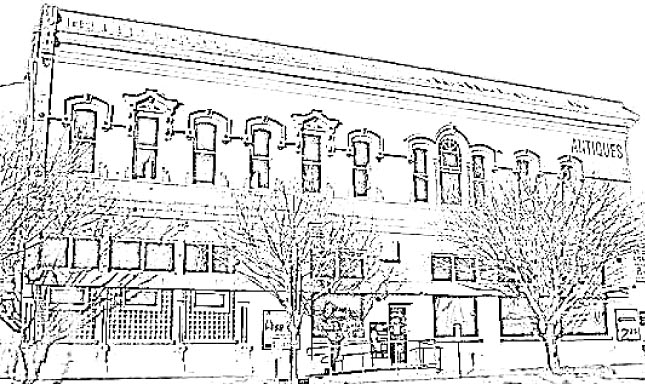


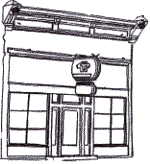





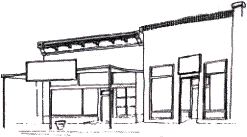












![[Image of Columbus]](images/rmcc.jpg)
 Starmax is a family entertainment center that includes a movie theater featuring the latest Hollywood releases. When the movie is over, have some fun at the bowling alley or video arcade. Don't forget to stop by and enjoy a refreshing beverage or delicious meal at the sports bar and grill. Located at 333 N. Country Club Road, Deming.
Starmax is a family entertainment center that includes a movie theater featuring the latest Hollywood releases. When the movie is over, have some fun at the bowling alley or video arcade. Don't forget to stop by and enjoy a refreshing beverage or delicious meal at the sports bar and grill. Located at 333 N. Country Club Road, Deming.![[Image of Columbus]](images/demingmuseum.jpg) The Deming Luna Mimbres Museum, regarded as the "Smithsonian of the southwest," is located at 301 S. Silver Avenue. This museum, organized and run by volunteers in the community, features exhibits about Deming, the region, and New Mexico. FREE with a request for a donation.
The Deming Luna Mimbres Museum, regarded as the "Smithsonian of the southwest," is located at 301 S. Silver Avenue. This museum, organized and run by volunteers in the community, features exhibits about Deming, the region, and New Mexico. FREE with a request for a donation. Twelve miles to the southeast of Deming is Rockhound State Park . There are camping/picknicking units, a water system, a playgound and sanitary facilities. Rocks and semiprecious gem stones are yours for the taking, such as quartz crystals, translucent chalcedony of white, bluish-grey, orange, and red hues. And you may even find a precious gemstone for your very own. There is a beautiful Panoramic View from the highest Northeast shelter.
Twelve miles to the southeast of Deming is Rockhound State Park . There are camping/picknicking units, a water system, a playgound and sanitary facilities. Rocks and semiprecious gem stones are yours for the taking, such as quartz crystals, translucent chalcedony of white, bluish-grey, orange, and red hues. And you may even find a precious gemstone for your very own. There is a beautiful Panoramic View from the highest Northeast shelter. North of Deming is the City of Rocks State Park . What you will see there today measures it's existence in millions of years. Over the last 30 million years, these mysterious rocks were wind-carved and rain worn, sculpted into outlandish streets and houses, temples and towers, some so improbable they could as well be the figments of an exploding dream. Man has been there also. Shards of pottery and arrowheads have been found there (and continue to be found today). Spanish Conquistadores carved mysterious crosses on the rocks, signs, some say, which may point to a long buried treasure. Every city has its legends. Explore her streets at will. Have fun! Rejoice in the park's severe, relentless beauty.
North of Deming is the City of Rocks State Park . What you will see there today measures it's existence in millions of years. Over the last 30 million years, these mysterious rocks were wind-carved and rain worn, sculpted into outlandish streets and houses, temples and towers, some so improbable they could as well be the figments of an exploding dream. Man has been there also. Shards of pottery and arrowheads have been found there (and continue to be found today). Spanish Conquistadores carved mysterious crosses on the rocks, signs, some say, which may point to a long buried treasure. Every city has its legends. Explore her streets at will. Have fun! Rejoice in the park's severe, relentless beauty.![[Spring Canyon Image]](images/springcanyon2.jpg) Shortly before reaching Rockhound State Park, turn south at the sign posted to visit Spring Canyon State Park. Continuing into the foothills, motorists will encounter a steep incline and decline leading into the park. Once in the boxed enclosure, visitors will realize a serene beauty and complete sense of isolation. Picnicking facilities available, but not camping. Ibex, wild goats originally shipped from Iran, may be encountered.
Shortly before reaching Rockhound State Park, turn south at the sign posted to visit Spring Canyon State Park. Continuing into the foothills, motorists will encounter a steep incline and decline leading into the park. Once in the boxed enclosure, visitors will realize a serene beauty and complete sense of isolation. Picnicking facilities available, but not camping. Ibex, wild goats originally shipped from Iran, may be encountered.![[Image of Columbus]](images/columbusnm2.jpg) Originally established in 1891 near the border, Columbus
Originally established in 1891 near the border, Columbus ![[Gila Cliff Dwellings Image]](images/GilaCliffDwellings.jpg) A national monument since 1907, the Gila Cliff Dwellings
A national monument since 1907, the Gila Cliff Dwellings![[Catwalk Image]](images/catwalk2.jpg) The often-steel, mile-long Catwalk in the Gila meanders into Whitewater Canyon and over Whitewater River. The Catwalk name came from miners in 1889 who constructed a 4-inch pipeline between sheer rock walls to carry water three miles from a mining site to the mill and town of Graham. Picnic sites are available but not overnight camping. Take US180 north from Deming to Silver City and continue to Glenwood. Turn right at NM 174 and drive five miles to entrance.
The often-steel, mile-long Catwalk in the Gila meanders into Whitewater Canyon and over Whitewater River. The Catwalk name came from miners in 1889 who constructed a 4-inch pipeline between sheer rock walls to carry water three miles from a mining site to the mill and town of Graham. Picnic sites are available but not overnight camping. Take US180 north from Deming to Silver City and continue to Glenwood. Turn right at NM 174 and drive five miles to entrance. Shakespeare Ghost Town is in the Southwestern part of the U.S. in the State of New Mexico. It is just outside the city of Lordsburg. Interstate 10 passes through this small southwestern city. It's located in the "Bootheel" of New Mexico.
Shakespeare Ghost Town is in the Southwestern part of the U.S. in the State of New Mexico. It is just outside the city of Lordsburg. Interstate 10 passes through this small southwestern city. It's located in the "Bootheel" of New Mexico.![[Elephant Butte Image]](images/Elephant-Butte-178037540.jpg) About 90 miles northeast of Deming is Elephant Butte Lake State Park which offers a marina, water sports, boating, camping, picnicking and fishing. Take State Highway 26 exit, just north of Deming, drive northeast to Hatch and connect on to I-25 north to Truth or Consequences. Take last exit north to T or C and follow signs to Elephant Butte Lake. Also, a few miles south of this lake is Caballo Lake State Park offering the same facilities.
About 90 miles northeast of Deming is Elephant Butte Lake State Park which offers a marina, water sports, boating, camping, picnicking and fishing. Take State Highway 26 exit, just north of Deming, drive northeast to Hatch and connect on to I-25 north to Truth or Consequences. Take last exit north to T or C and follow signs to Elephant Butte Lake. Also, a few miles south of this lake is Caballo Lake State Park offering the same facilities.